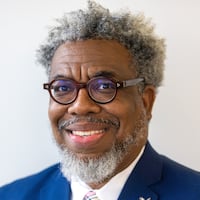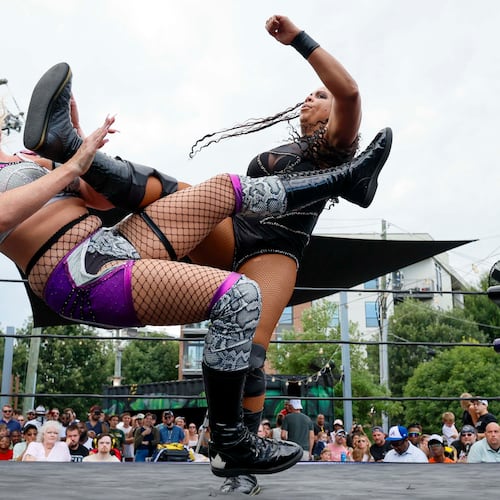You won’t find any images of blackface in the APEX Museum.
Dan Moore, the president and founder of the 40-year-old black history museum on Auburn Avenue, has seen enough of it in his lifetime.
“It just reflects America as it was and as it is,” Moore said. “I see no changes out of the ordinary about how people not of our hue think about us. That is just a fact of life.”
While that is a subject of debate, the modern conversation about blackface often ignores its racist history.
In a 2018 Halloween segment of "Megyn Kelly Today," the host seemed befuddled that blackface would be a problem. "Back when I was a kid, that was OK," said Kelly, who is in her late 40s. "As long as you were dressing up as, like, a character."
Kelly apologized, but lost her TV show.
The origins of blackface date back nearly 200 years to the mid-1800s.
White minstrel performers, in an attempt to mock slaves, distorted the features and mannerisms of blacks to portray them as lazy, stupid, irresponsible, superstitious, hypersexual and inarticulate cowards. They applied dark shoe polish or burnt cork to their faces.
The first minstrel shows were held in New York City in the 1830s and popularized by Thomas Dartmouth Rice, known as the “Father of Minstrelsy.”
It was Rice who developed the first popularly known blackface character, “Jim Crow,” the lazy, mischievous Southern slave from which the forthcoming legal system of segregation took its name.
Credit: SEE CAPTION
Credit: SEE CAPTION
>> RELATED | Before multiculturalism, blackface rampant in U.S. pop culture
The blackface image in Virginia Governor Ralph Northam's 1984 medical school yearbook which sparked calls for his resignation this month is a slight variation of the Jim Crow character. Historian and author Eric Lott, in a New Yorker magazine interview, suggests that with the bowtie and suit, the person in the photo is assuming, whether he knows it or not, the Zip Coon, a dandy, free Northern black, who spoke in a series of malaprops that undermined his attempts to appear dignified and was "lampooned for assuming airs and intellect beyond his station."
During Reconstruction and the turn of the 20th Century, the popularity of blackface grew nationwide, particulary in the North and Midwest, where blacks were not as prevalent as they were in the South.
As methods of communications and entertainment changed, blackface eased from the stage to the movies.
In one of the first full-length feature movies, the 1903 adaptation of “Uncle Tom’s Cabin,” slaves were played by white actors in blackface. In 1915, then-President Woodrow Wilson said “The Birth of a Nation” was “like writing history with lightning. And my only regret is that it is all so terribly true.” He was talking about a movie where greedy and corrupt black politicians and rapists were played by whites.
The concept proved so popular that by 1927, when the first “talkie,” “The Jazz Singer,” debuted, it featured Al Jolson, a Lithuanian Jewish immigrant, performing in blackface singing “Mammy.”
“As early sound film drew upon vaudeville and popular musical theater, and since blackface was so popular and Jolson so effective at it, it was a very logical business decision by Warner Bros. to make this film with him,” said Matthew Bernstein, chair of the department of film and media studies at Emory University.
Even sweethearts like Shirley Temple, Judy Garland and Mickey Rooney wore blackface in movies.
WATCH BELOW: Spike Lee’s montage of blackface from “Bamboozled.”
“It claims for its white practitioners the absolute right to enjoy black culture and black bodies while taking no responsibility for respecting black history and black lives,” said David Roediger, an American Studies professor at University of Kansas and author of “Class, Race and Marxism.”
In some instances, black performers like Bert Williams, performed in blackface for white audiences. That prompted director Spike Lee in 2000 to release "Bamboozled," about a modern televised minstrel show featuring black actors donning blackface makeup and the resulting violent fallout from the show's success.
The trope fell out of favor in pop culture around World War II. It has periodically resurfaced, in everything from movies like “Silver Streak,” “Tropic Thunder” and “Soul Man” to politics and fashion:
• In 1993, Ted Danson appeared in blackface, complete with big white lips, at a N.Y. Friars Club Roast to deliver an offensive N-word-filled comedy routine in honor of Whoopi Goldberg.
• In 2013, actress Julianne Hough donned dark makeup for a Halloween outfit in which she dressed like Uzo Aduba’s “Orange Is the New Black” character Crazy Eyes.
• In 2015, celebrity chef Paula Deen and her son Bobby dressed as Lucy and Desi Arnez. Bobby painted his face brown to look like the Cuban-born Arnez.
• Earlier this year, Florida Secretary of State Michael Ertel resigned after photos emerged of him posing 14 years ago as a blackfaced Hurricane Katrina victim at a Halloween party.
•And just this month, Gucci removed a $900 sweater from its website which featured a roll-up collar that covered the lower part of the face with big red lips.
“Technology certainly makes finding past blackface misadventures more possible and more disseminated,” Roediger said.
Keep Reading
The Latest
Featured



